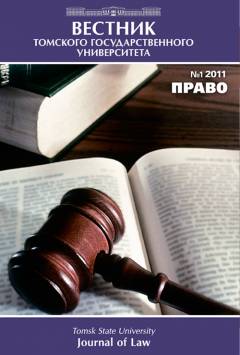International legal aspects of the steady development of forests
Forests support a variety of economic and social activities and have a vital importance for ecological stability. They form a source for a wide range of both timber and non-timber products as well as for employment and profit and have the most significant ecological functions e.g. contribute to preserving of soil, water resources and biological variety, mitigating the consequences of climate changes by way of carbon absorbing and accumulation. Moreover, forests ensure activities of a huge industrial sector; they are a source for the means of living in rural areas and support the life of millions of people in forest regions. The forests in tropic, middle and northern latitudes represent a multiform complex of habitats for plants, animals and microorganisms, of the vast majority of terrain plants and animals of our planet. Such a variety is the result of both evolution and the impact of physical environment and men. Deforestation and degradation of forests are serious problems in many regions of the world. Forests are the most important natural resource. They cover about 38% of the earth surface in the countries-members of the United Nations Economic Commission for Europe. Forests form the basic landscape and provide a wide range of services and goods (wood fibres, timber, possibilities for having a rest etc.) to the society. Forests have a huge part of biological diversity and perform ecological functions, absorbing carbon, improving the quality of water and protecting soil. International legal documents of the UN include: the Convention on Biological Diversity, United Nations Framework Convention on Climate Change, UNECE's Convention on Long-range Trans-boundary Air Pollution and A Statement of Principles for a Global Consensus on Management, Conservation and Sustainable Development of All Types of Forests. The two processes are of significance at the ministerial level in Europe: "Environment for Europe" and "Protection of forests in Europe".
Keywords
устойчивое развитие, конвенции по международному экологическому праву, леса, steady development, conventions on international ecological law, forestsAuthors
| Name | Organization | |
| Kukushkina Anna V. | Moscow State Institute of International Relations of Ministry of Foreign affairs | rperelet@hotmail.com |
References

International legal aspects of the steady development of forests | Tomsk State University Journal of Law. 2016. № 2(20).